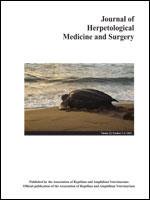The bearded dragon (Pogona vitticeps) is (perhaps) the most common pet lizard in the United States. The purpose of this review article is to provide a practical overview of the natural history, husbandry, nutrition, reproduction, physical examination method, diagnostic techniques, currently recognized diseases, and therapeutics found useful for the bearded dragon. Nutritional secondary hyperparathyroidism and trauma attributable to cage-mate aggression are common problems encountered in juvenile dragons. Intestinal impaction and renal and cardiac diseases are more commonly seen in adult dragons. Newly described malignancies such as periocular squamous cell carcinoma and gastric carcinoma have also been reported in juvenile and adult bearded dragons.
How to translate text using browser tools
1 September 2012
Husbandry, Diseases, and Veterinary Care of the Bearded Dragon (Pogona vitticeps)
Paul Raiti
ACCESS THE FULL ARTICLE
It is not available for individual sale.
This article is only available to subscribers.
It is not available for individual sale.
It is not available for individual sale.

Journal of Herpetological Medicine and Surgery
Vol. 22 • No. 3
September-December 2012
Vol. 22 • No. 3
September-December 2012
bearded dragon
diseases
husbandry
lizard
Pogona vitticeps
reptile




